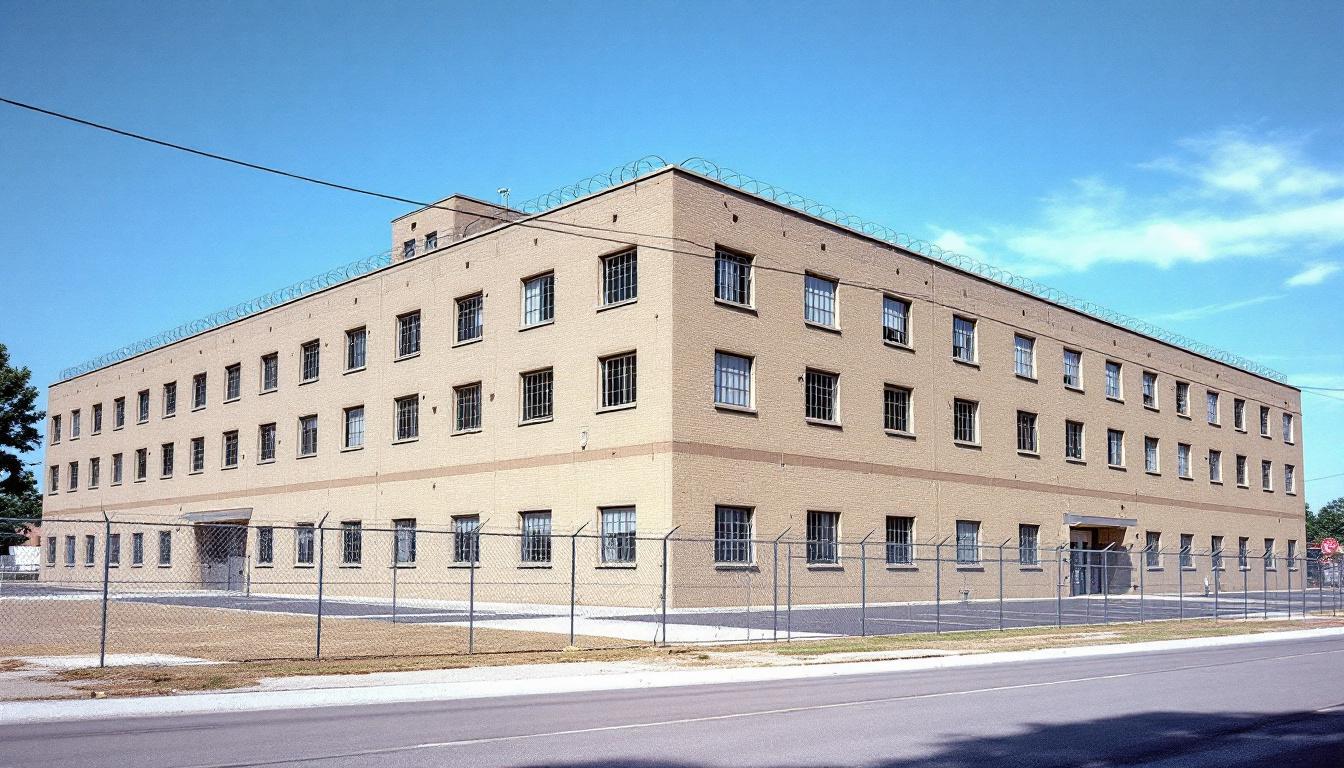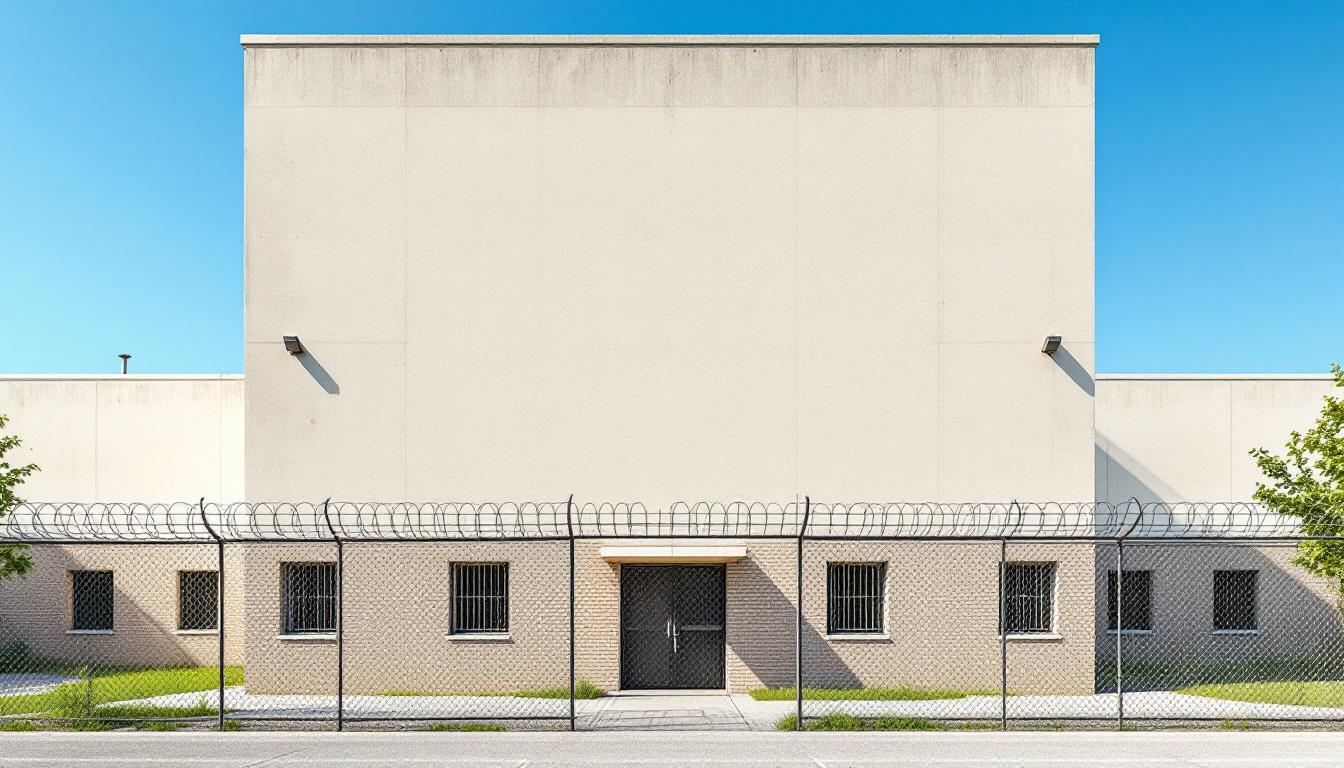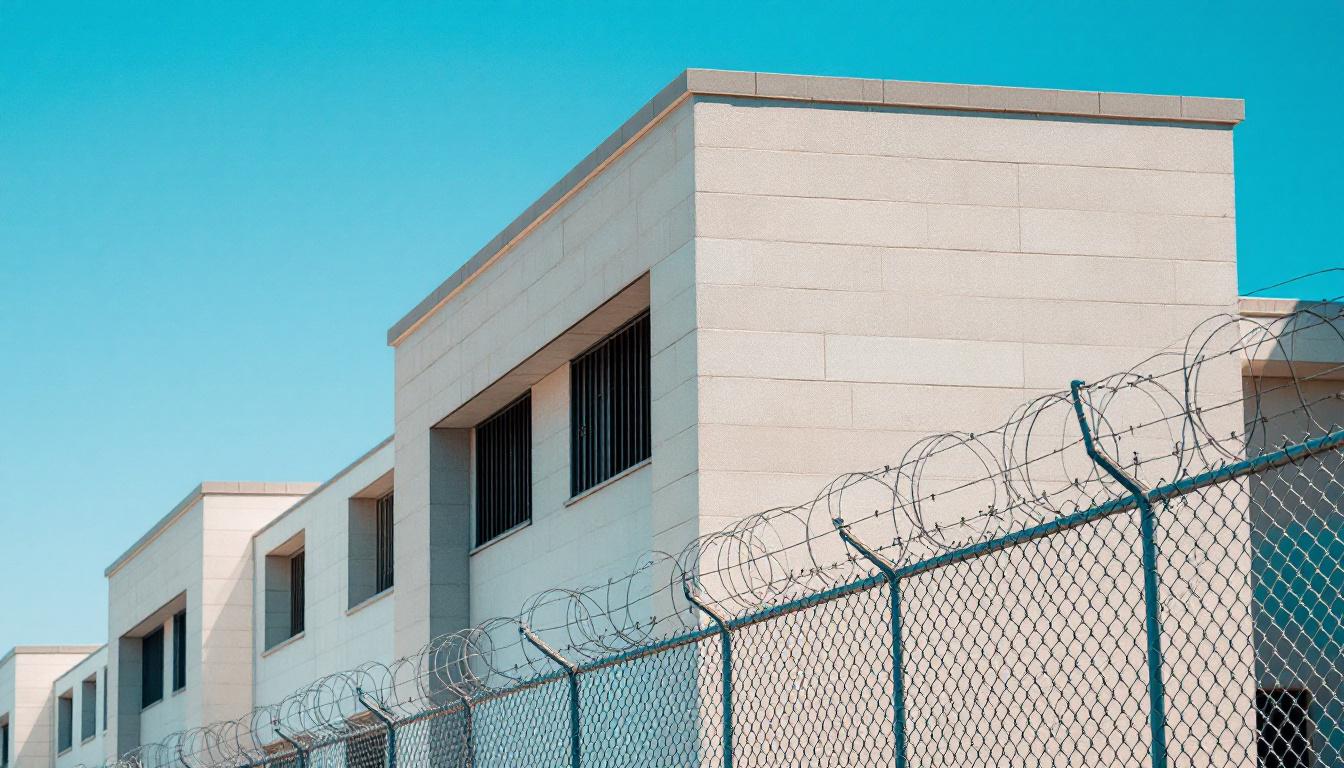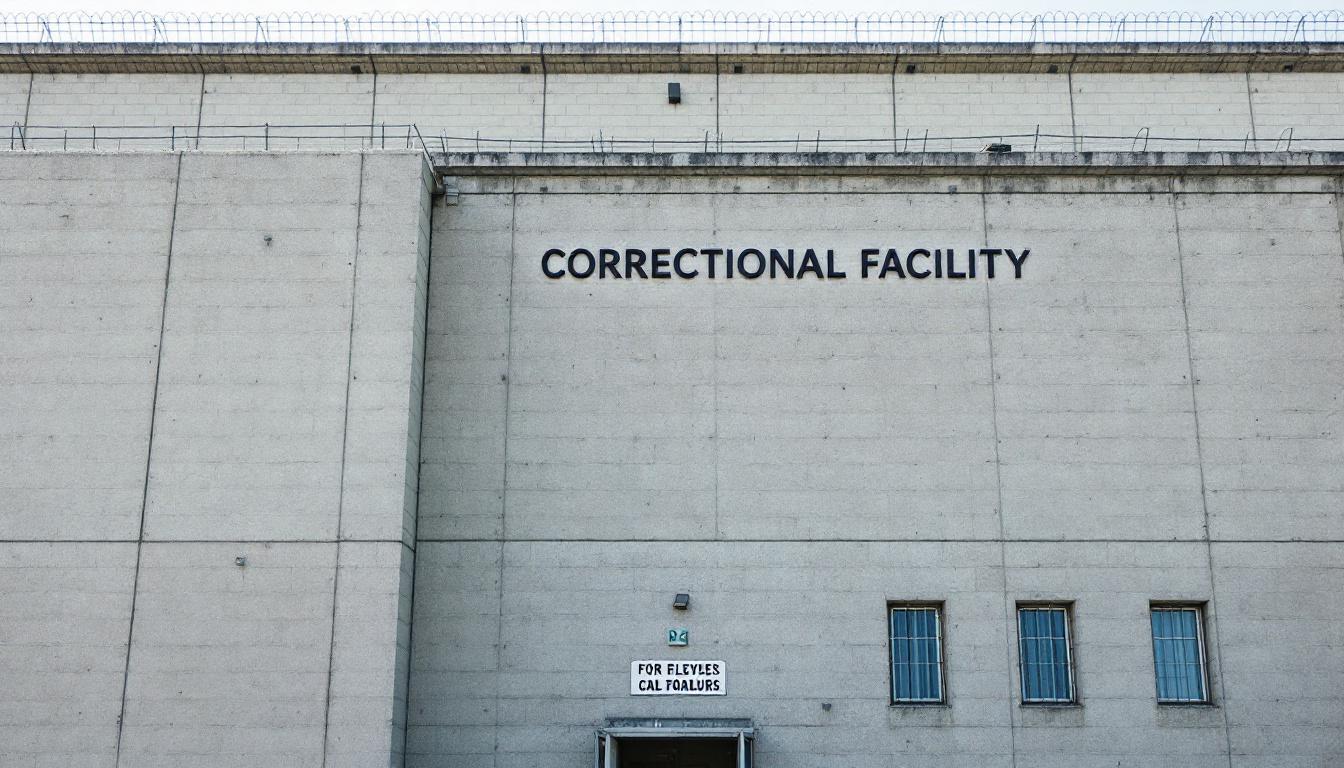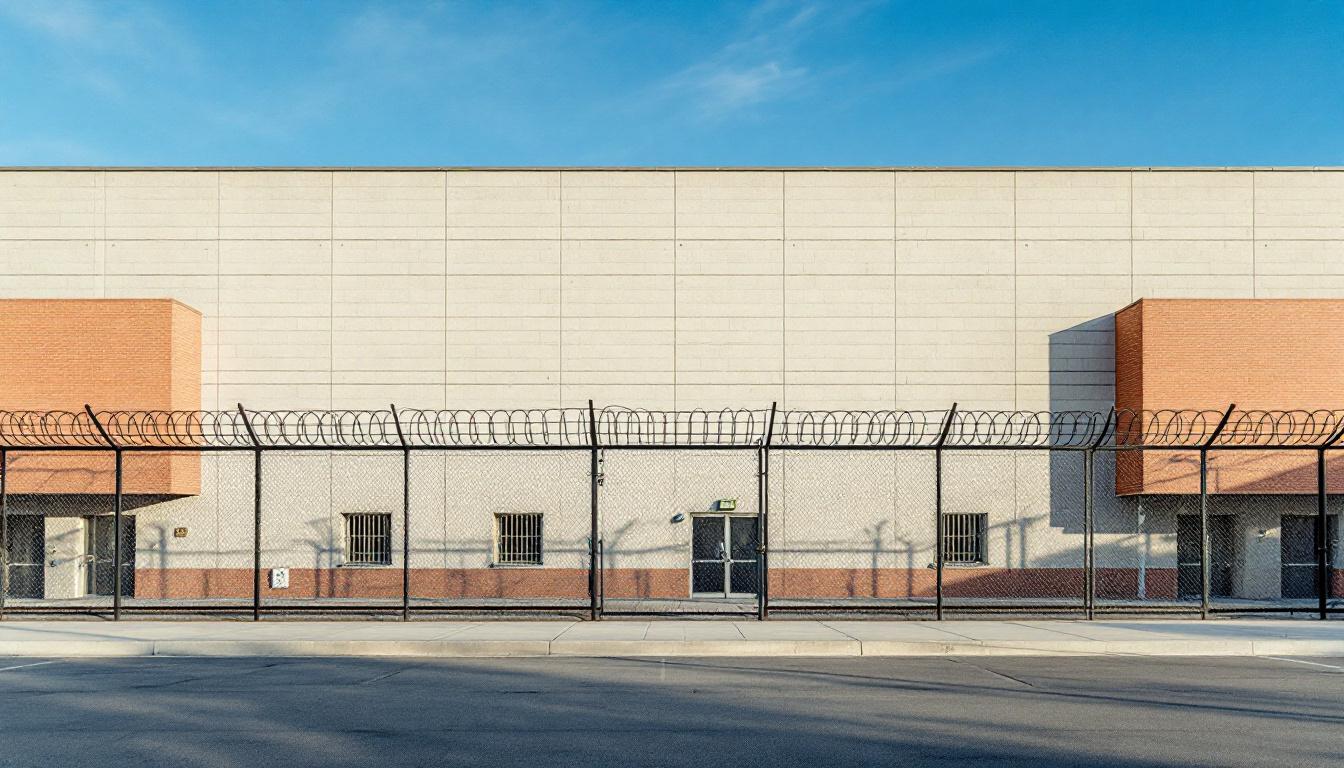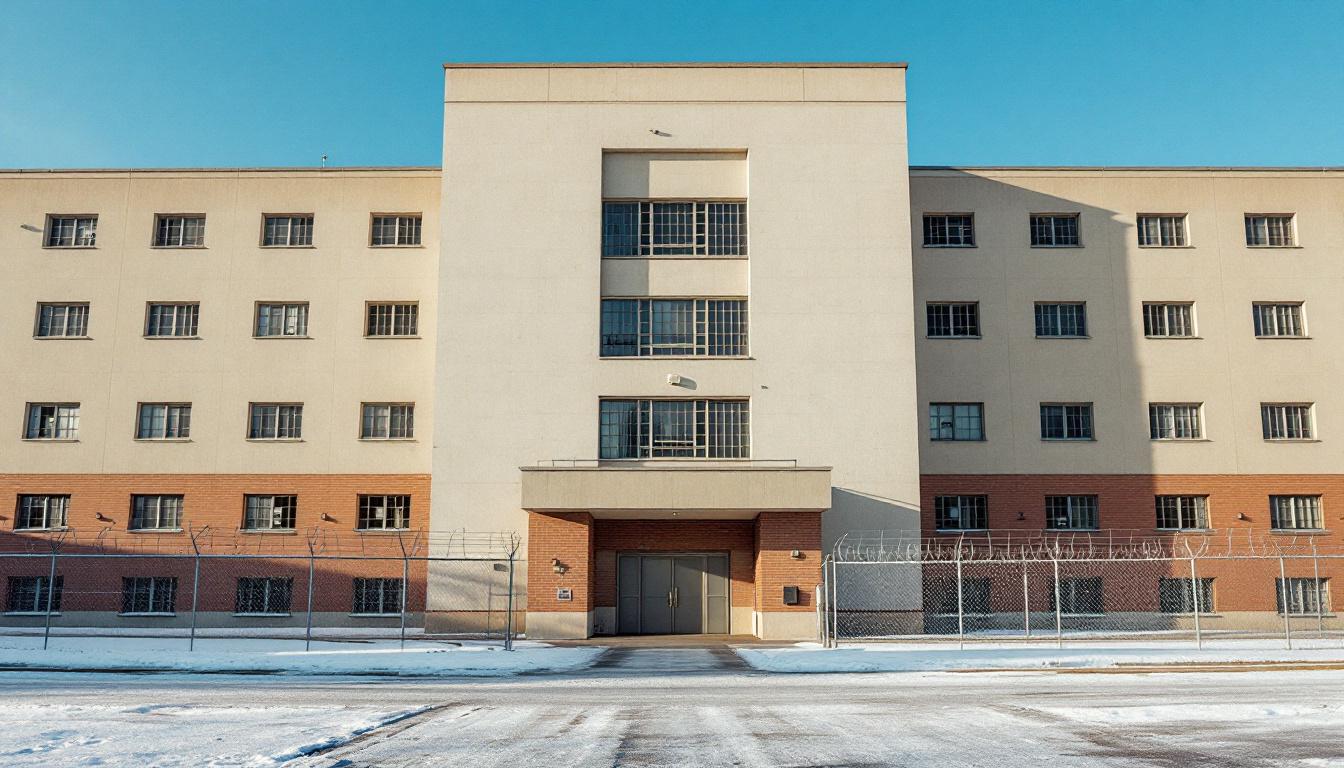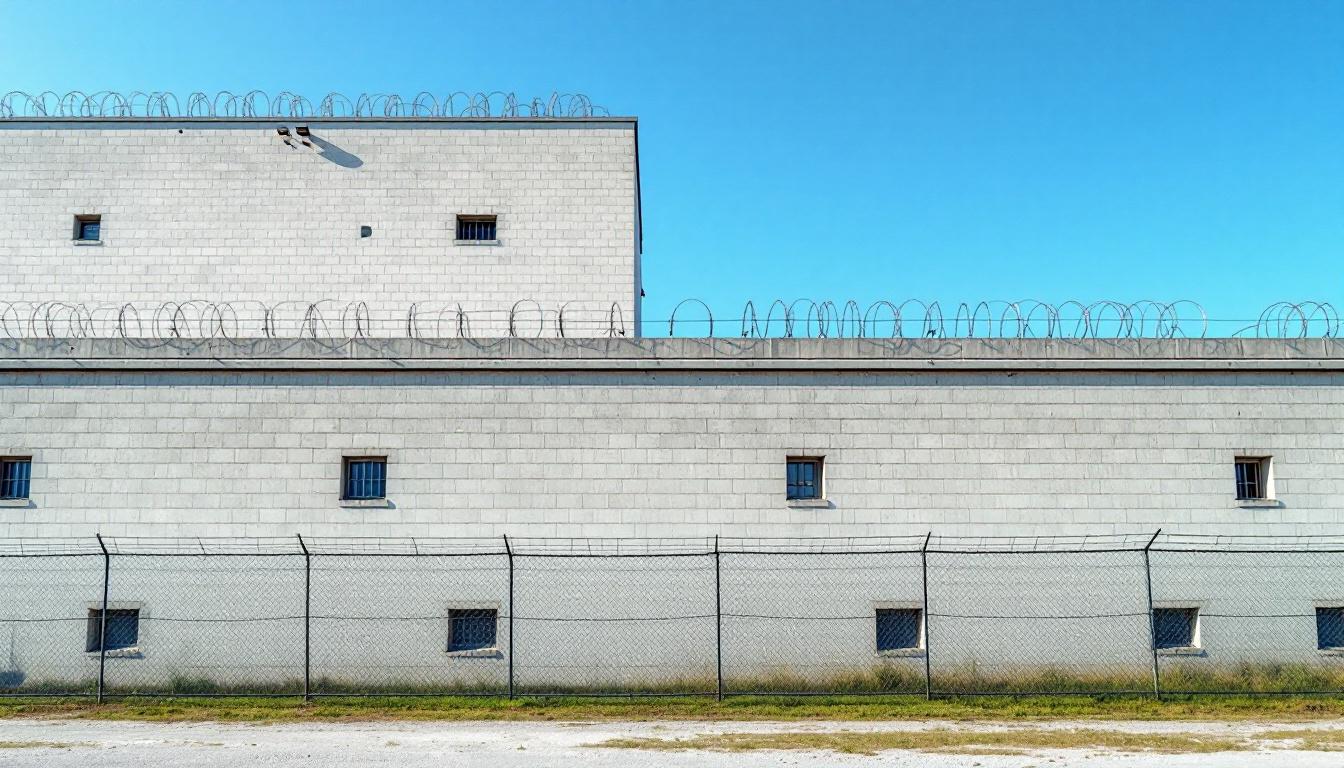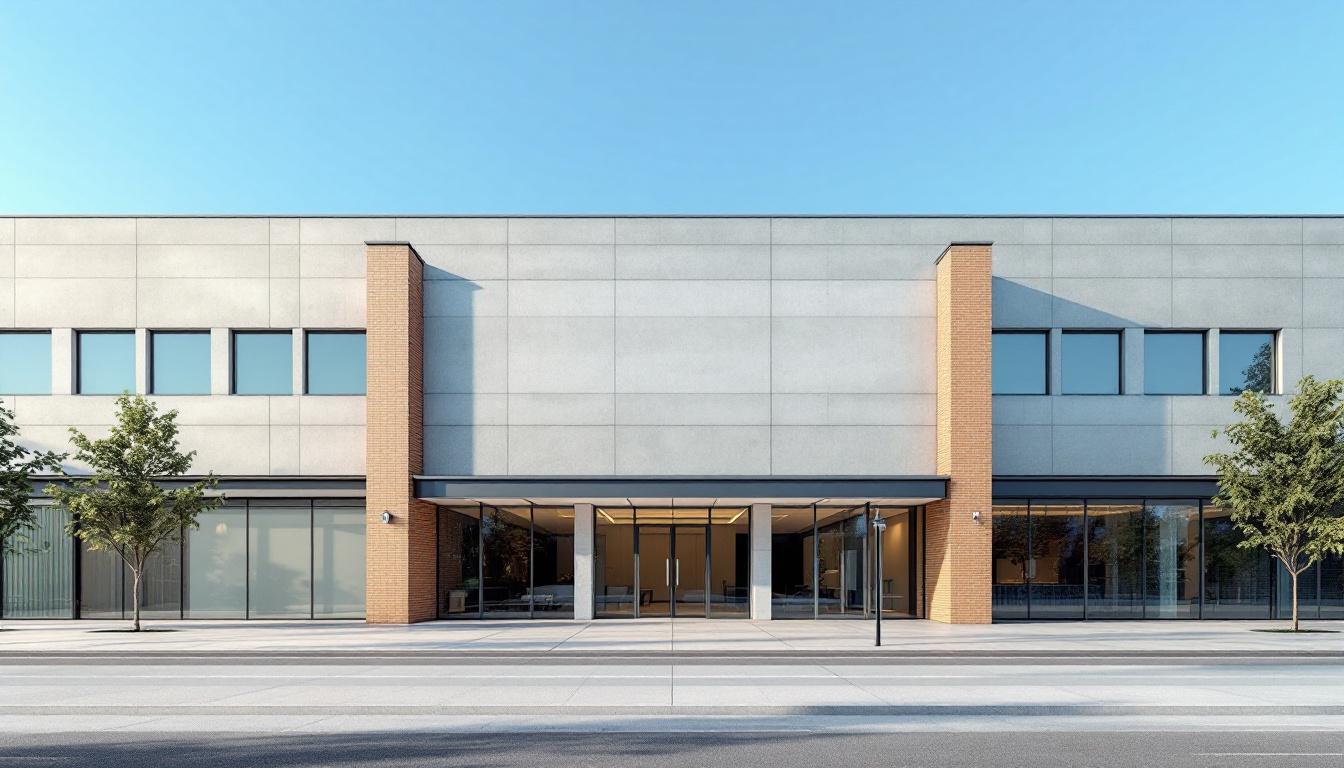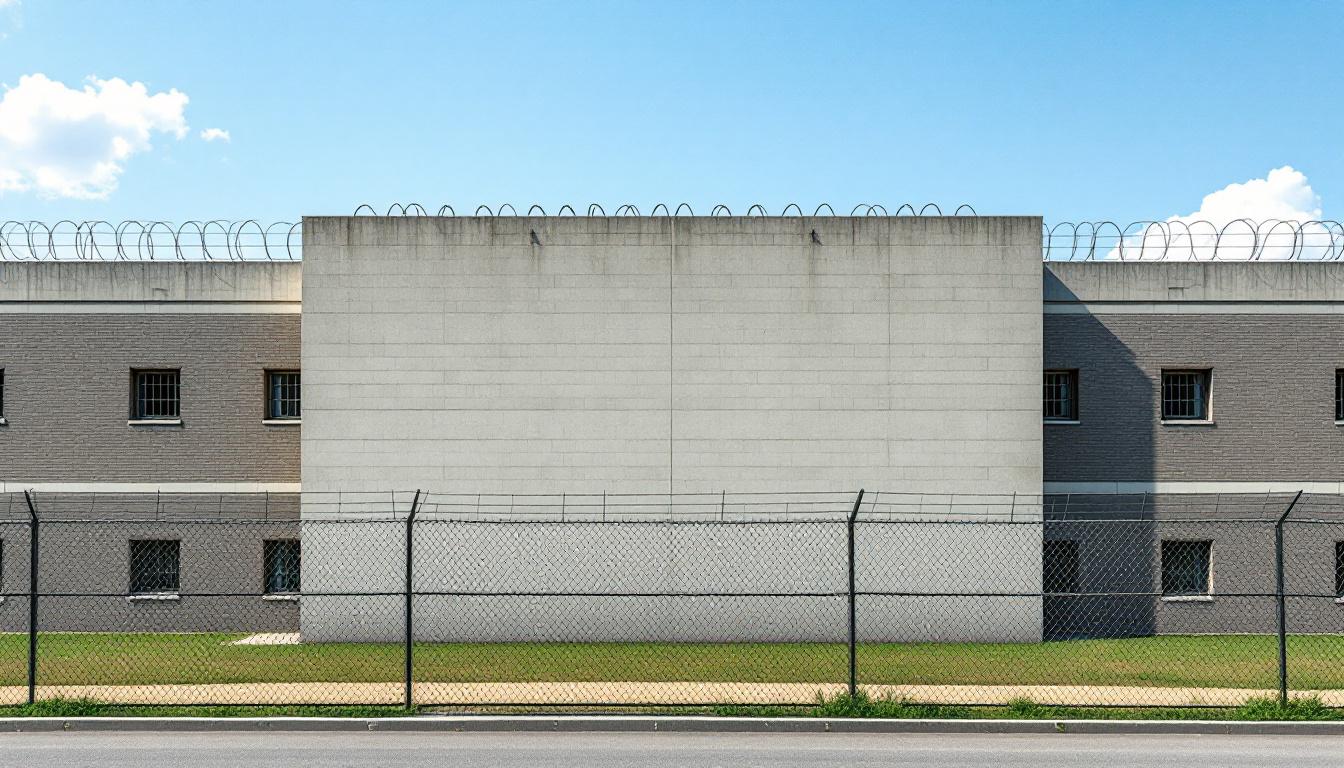
Quick Navigation
How to contact an inmate at United States Penitentiary Leavenworth
This comprehensive guide will walk you through how to connect with an inmate at United States Penitentiary Leavenworth. Follow the steps below to find an inmate and send letters and photos:
- Search for the inmate using our search tool below
- Create your account or log in to Penmate
- Write your message (up to 6,000 characters)
- Send instantly - inmates receive printed copies daily
Find an Inmate
Search for an inmate to start communicating today
Tip: You can search by first name, last name, or inmate ID number
To contact a person at United States Penitentiary Leavenworth start by searching for the person on the official facility website. Perform a search by following these steps:
- Step 1: Enter their first name and last name into the search form and click "Search"
- Step 2: Locate their inmate record
- Step 3: Write down their Inmate ID and any housing information provided
Important! Be sure to enter the person's full name. Nicknames should not be used.
How to Send Messages to Inmates

You can use your phone or computer to send emails, letters, and photos to an inmate. Messages are sent electronically to inmate tablets or kiosks at the facility. If you would like to send a message, start by searching for an inmate at United States Penitentiary Leavenworth.
Sending Photos and Postcards

A great way to send love and support to a loved one at United States Penitentiary Leavenworth is to send photos and postcards. It only takes a few minutes to send photos from your phone and it makes a huge difference. You can also mail postcards with words of support and inspiration, or design your own postcard for special moments like birthdays and holidays.
Important! Be sure not to send any explicit photos or they may not be approved by the facility. You can also use a photo printing app like Penmate to make sure your photos are printed at the correct size (4x6 or 3x5) and are mailed according to the rules and regulations of United States Penitentiary Leavenworth.
Frequently asked questions about United States Penitentiary Leavenworth
-
How long does it take to deliver a message?
If you're sending an email message your letter is usually delivered within 24-48 hours. For messages sent via mail you should expect delivery within 3-7 days. All messages will need be approved by United States Penitentiary Leavenworth.
-
How much does it cost to send a message to United States Penitentiary Leavenworth?
You can send a message free using your phone or mail a message via USPS for the price of a $0.60 stamp and envelope. You can also purchase credits or e-stamps from services starting at $1.99.
-
What services can I use to contact an inmate at United States Penitentiary Leavenworth?
Penmate
You can use Penmate to send letters and photos to an inmate from your phone. It's an easy way to stay in touch during your loved one's incarceration. Use the inmate locator to find an inmate's location and contact information, then you can send messages within a few minutes.
Securus messaging
Securus may be another option for communicating with an inmate at United States Penitentiary Leavenworth. You can create a friends and family account and purchase credits to send messages. All messages will be reviewed and must be approved by the facility.
JPay
Some county jails and state prisons may support sending messages with JPay. You must register an account with the system, find your loved one, and purchase stamps to send messages. For some locations you can also attach photos.
Smart Jail Mail
You may also check if Smart Jail Mail is available at United States Penitentiary Leavenworth. Smart Jail Mail is operated by Smart Communications and has contracted with some state and county jails. After purchasing credits, your messages and photos are sent to the facility, printed out, and then handed out to your loved one.
-
What is the mailing address of United States Penitentiary Leavenworth?
Mailing address:
United States Penitentiary Leavenworth
1300 Metropolitan Ave
Leavenworth, KS 66048
Phone: (913) 682-8700Business hours:
- Monday: Open 24 hours
- Tuesday: Open 24 hours
- Wednesday: Open 24 hours
- Thursday: Open 24 hours
- Friday: Open 24 hours
- Saturday: Open 24 hours
- Sunday: Open 24 hours
-
What are the visiting hours at United States Penitentiary Leavenworth?
Visiting hours at United States Penitentiary Leavenworth vary by housing unit and security level. Generally, visits are scheduled on weekends and holidays, with some facilities offering weekday visits. Contact the facility directly at (913) 682-8700 or check their website for the current visiting schedule. Visits typically last 30-60 minutes and must be scheduled in advance.
-
What items are prohibited when sending mail to United States Penitentiary Leavenworth?
Prohibited items typically include: cash, personal checks, stamps, stickers, glitter, glue, tape, staples, paperclips, polaroid photos, musical or blank greeting cards, hardcover books, magazines with staples, and any items containing metal or electronics. Only send letters on plain white paper with blue or black ink. Photos must be printed on regular photo paper (no Polaroids). Always check with United States Penitentiary Leavenworth for their specific mail policies.
-
How do I send money to an inmate at United States Penitentiary Leavenworth?
You can send money to an inmate at United States Penitentiary Leavenworth through several methods: 1) Online using JPay, Access Corrections, or the facility's approved vendor, 2) Money orders mailed directly to the facility with the inmate's name and ID number, 3) Kiosks located in the facility lobby, or 4) Over the phone using a credit or debit card. Fees vary by method, typically ranging from $2.95 to $11.95 per transaction.
-
Can I schedule a video visit with an inmate at United States Penitentiary Leavenworth?
Many facilities now offer video visitation as an alternative to in-person visits. At United States Penitentiary Leavenworth, video visits may be available through services like Penmate, Securus Video Connect, GTL, or ICSolutions. Video visits typically cost $10-20 for 20-30 minutes and must be scheduled in advance. You'll need a computer or smartphone with a camera and reliable internet connection. Contact the facility for their specific video visitation policies and approved vendors.
-
What identification do I need to visit an inmate at United States Penitentiary Leavenworth?
All visitors must present valid government-issued photo identification such as a driver's license, state ID, passport, or military ID. Minors must be accompanied by a parent or legal guardian who can provide the minor's birth certificate. Some facilities require visitors to be on the inmate's approved visitation list, which may require a background check. Contact United States Penitentiary Leavenworth for specific ID requirements and visitor approval procedures.
-
How can I find out an inmate's release date?
To find an inmate's release date at United States Penitentiary Leavenworth, you can: 1) Use the online inmate search tool if available, 2) Call the facility's records department, 3) Contact the inmate's case manager or counselor, or 4) Have the inmate provide this information during a call or visit. For privacy reasons, some facilities only release this information to immediate family members.
Facility Overview
Contact Information
United States Penitentiary Leavenworth1300 Metropolitan Ave
Leavenworth, KS 66048
Phone: (913) 682-8700
Official Website

About United States Penitentiary Leavenworth
Nestled within the historic city of Leavenworth, Kansas, this federal correctional facility operates as a significant component of the region's correctional infrastructure, serving residents from across the Midwest and beyond. USP Leavenworth functions as a medium-security institution that typically houses adult male residents, offering structured environments designed to support both security objectives and rehabilitative goals. The facility's location in eastern Kansas positions it within a community that has long been associated with correctional services, creating opportunities for residents to maintain connections with family members while participating in programs aimed at successful reintegration.
The institution generally provides a comprehensive range of services that may include educational opportunities, vocational training programs, and various therapeutic interventions designed to address individual needs. Residents often have access to academic programming that can help them complete high school equivalency requirements or pursue post-secondary educational goals. Additionally, the facility typically offers work assignments and skill-building programs that align with federal correctional standards and support long-term rehabilitation objectives. Mental health services and substance abuse treatment programs are commonly available to address underlying issues that may have contributed to criminal behavior.
As part of the federal prison system's broader mission, this KS correctional facility emphasizes preparing residents for successful community reentry through structured programming and gradual transition support. The institution's residents services approach typically includes case management, family communication opportunities, and pre-release planning assistance. These comprehensive efforts reflect the facility's integration with federal correctional goals while serving the specific needs of individuals from diverse geographic and cultural backgrounds throughout the Midwest region.
Programs & Services
Educational initiatives form the cornerstone of rehabilitation efforts, with residents participating in programs designed to address individual learning needs and career goals. The facility typically emphasizes skill-building approaches that prepare individuals for successful community reintegration. These comprehensive initiatives often include multiple pathways for personal development and professional growth.
Academic programming may deliver basic literacy instruction, GED preparation, and post-secondary educational opportunities through distance learning partnerships. Vocational training initiatives often include construction trades, food service operations, and facility maintenance programs that provide hands-on experience with marketable skills. Residents typically gain certifications in various technical fields while contributing to daily operations. In addition to this, computer literacy courses may offer essential digital skills needed in today's workforce.
Support services encompass therapeutic initiatives addressing substance abuse treatment through group counseling and individual sessions. Chaplaincy programs typically provide spiritual guidance and community connection opportunities for residents of various faith backgrounds. Reentry preparation initiatives may deliver practical life skills training, including financial literacy, job search techniques, and housing assistance planning. In addition to this, mental health services often include counseling support to help residents address underlying issues that may have contributed to their incarceration, creating a foundation for long-term success upon release.
Daily Life & Visitation
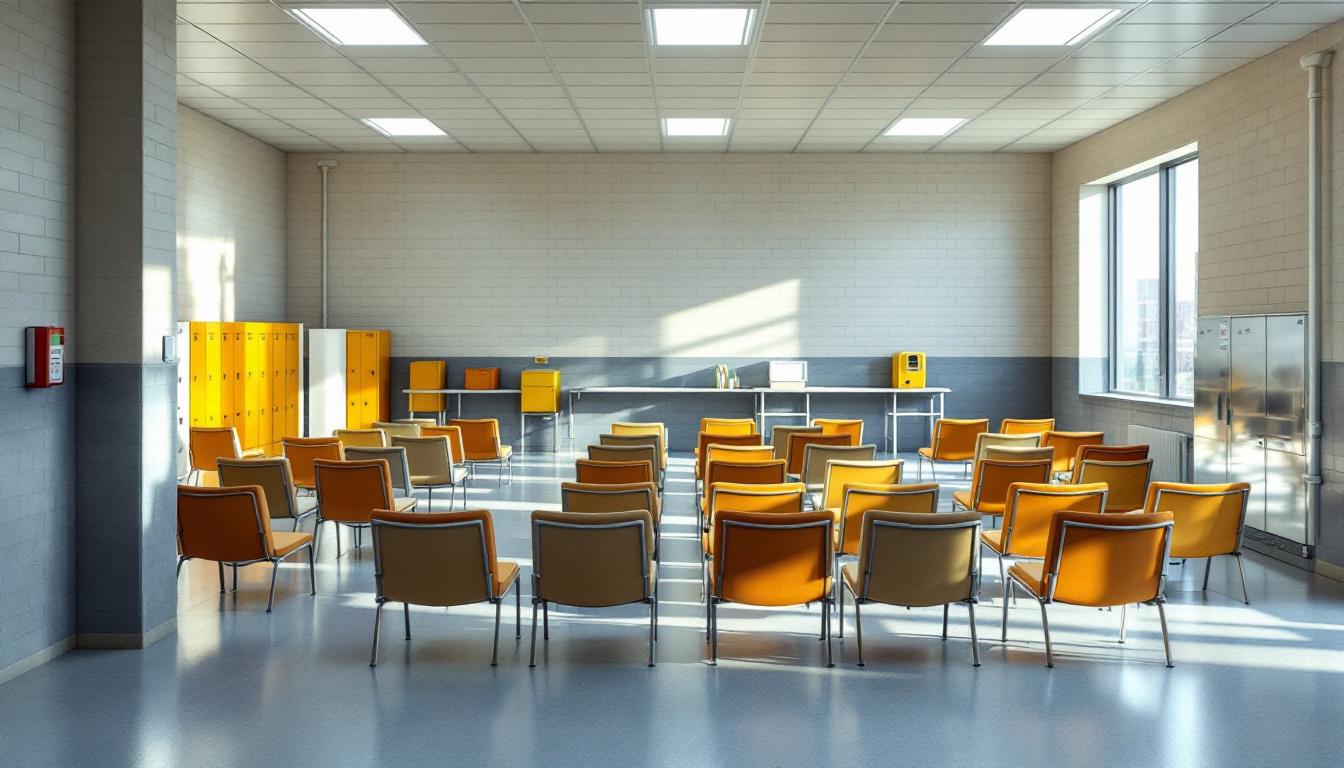
Structured schedules at present actively govern every aspect of residential life, with count times, meal periods, and program activities delivering predictable frameworks that residents can rely on throughout each day. Wake-up procedures typically occur in the early morning hours, followed by scheduled counts, breakfast service, and the beginning of work assignments or educational programming. These routines generally remain consistent, allowing residents to develop stable daily patterns within the federal correctional environment.
Housing units typically accommodate residents in double-occupancy cells, with each person generally receiving basic furnishings including a bed, desk, and storage space for approved personal property. Meals are usually served in designated dining areas at scheduled times, with residents moving in organized groups under staff supervision. In addition to this structured meal service, commissary privileges may allow residents to purchase additional food items and personal care products, though availability often depends on individual account balances and facility policies.
Work assignments actively engage most residents during weekday hours, with positions typically available in areas such as food service, maintenance, laundry operations, or facility cleaning duties. Recreation periods usually include access to outdoor exercise areas, indoor gymnasium facilities, and library services, though scheduling may vary based on security requirements and facility operations. Despite this structured environment, visitation opportunities generally allow residents to maintain family connections through scheduled visits and approved telephone communications, helping preserve important relationships during their period of incarceration.
Ready to Connect?
Start communicating with your loved one today
Search for an Inmate
